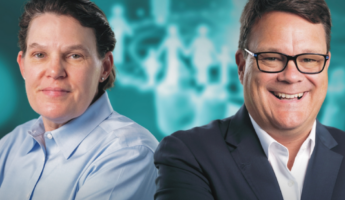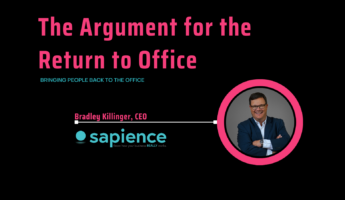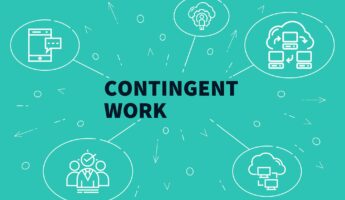Sapience Analytics
Remote Workforce Management: Nurturing Your Greatest Asset Through the Pandemic and Beyond

Want to learn more about this? Subscribe below and one of our specialists will get in touch with you with more info!
Now that the mechanics of working from home have been ironed out for your knowledge workforce, it is time to fine tune your company’s new work environment so employee engagement and morale can be brought back to the pre-pandemic highs. It was true before, and it is true today: A happy workforce equals a highly productive company. So how does one go about improving employee happiness and productivity?
“What makes it tricky is that there simply isn’t a one-size-fits-all solution,” said Jannie Kinsey-Goods, Sapience’s senior vice president of human resources. “But we see that companies across the business spectrum are trying to come to terms with this, figuring out what it means for them specifically.”
She references a June survey by Bay Leaf Digital of teams newly working from home, exploring the challenges and benefits experienced by employees, managers and leaders. They found that
- Employees are concerned with the possibility of reduced productivity, the higher potential for burnout, challenges to collaboration, and a general sense of feeling disconnected.
- Managers are also worried about maintaining team communication, collaboration and accountability.
- Senior management revealed a lack of preparedness in measuring the productivity of a remote or hybrid workforce; 30 percent weren’t using any meaningful metrics at all.
Sapience proposes that organizations need a personalized management approach that synergizes three key elements:
- Qualitative feedback
- Quantitative data
- Employee self-awareness and proactivity
Jannie explained these three elements from the human resources perspective.
Qualitative Feedback
Considering widespread concerns with maintaining collaboration and connection, it seems that many people intuitively realize that, even in our high-tech age, there’s simply no substitute for the human touch. Jannie believes managers must make time to check in with their employees and practice active listening.
“Just pick up the phone and ask, ‘Hey, how are you, how’s your family?’ It’s really important that any manager show empathy for what their employees are experiencing,” she said. “Households are facing a diversity of challenges right now – work challenges, school challenges, potentially medical challenges. You must not be afraid to ask, ‘How can I help?’”
Jannie stressed that everything comes back to good communication. Managers must be creative to keep the lines of communication open. Remember the following best practices:
- Develop an open-door philosophy and contract with each member of the team that it’s OK to ask for confirmation or help.
- In Teams and Zoom, encourage everyone to show their faces, live, to help others feel more connected.
- When sending an email, take a few minutes of review to ensure you’re sending the message you intend to convey and that you’re showing respect.
- When issues seem to be arising, don’t let them fester; pick up the phone and gently clear the air.
- Regularly conduct short pulse surveys, just to touch base on the latest current topics and to help keep employees mindful and involved.
As an enterprise, Sapience hosts team “show up” meetings with no agenda; they’re solely to reconnect.
“It helps keep our culture alive and unified,” Jannie said. “And I call those who can’t attend just to say, ‘How are you? I’ve missed you.’”
Quantitative Feedback
Managers worry about productivity and accountability, and these worries are often compounded when trying to manage from a distance. However, Jannie reminds us all that, while the pandemic won’t last forever, its consequences could.
“The worst thing is to try to micromanage in our current environment,” she said. “Managers must think long-term, because their employees are going to remember how their employers made them feel at this time. Retention will become a problem for employers who don’t act with respect, who aren’t flexible when it’s needed.”
Some managers just have a higher comfort level with trusting the individual. However, for those who struggle with this, clear lines of communication become even more important:
- Maintain regularly scheduled check-ins.
- Communicate crystal-clear expectations for effort and output, including clear notifications of all deadlines.
- Proactively make room for more flexibility within work schedules to accommodate current challenges at home.
Managers who are tempted to hover should instead focus on measurables such as:
- Are deadlines being met?
- Are there any customer complaints?
- Are they sensing any angst on the team as a whole?
Then, as specific concerns arise, work with each employee individually.
One effective way to put more focus on measurables is to implement a workplace analytics solution like Sapience Vue. Not only does it provide clear, objective data in near real time, it allows managers to initiate conversations about specific aspects of productivity, which leads back to the earlier concept of empathy and “How can I help?”
“Data absolutely plays a role,” Jannie said. “It’s important to objectively be able to see how your teams are trending.”
But Vue doesn’t just benefit managers; it also supports employees’ desire and ability to self-manage.
Employee Proactivity
Sapience doesn’t just sell workplace analytics tools; their employees use their product as well.
“It was a little intimidating at first,” Jannie said. “But I’ve learned it helps me understand those days when you know you worked all day, you’re drained, and yet you’re wondering, “What did I actually get accomplished today?’ Every morning I get a message from Vue that summarizes my previous day. If it’s ‘Congratulations, you were really in the zone yesterday!’, I can feel good about what I did. Or maybe if my productivity wasn’t quite there, it reminds me to stop and reflect. It’s great for my own self-awareness at work.”
Jannie also uses the results and recommends leaders use it to troubleshoot for their employees: “Vue helps me know when it’s the right time to ask for a check in. For instance, if I see they’ve been in a lot of meetings, I can ask, ‘Do you feel you’re in the right meetings, or is your attendance merely a placeholder?’ Because we can fix that, particularly lately when so many people seem to be in meetings overload.”
Personalizing Management to Your Teams
There is no single way of managing all employees at all businesses, everywhere. Different teams, functional groups, or even geographic regions can have different goals and needs. Your managerial goal – and challenge – is to combine the elements of qualitative, quantitative and proactive data for each group so that they all feel connected and empowered to achieve their best productivity. Only then will you develop a full view of what’s happening with your employees as well as your whole organization.
For more information on how Sapience can help bring all your quantitative workforce data into focus, get in touch with a solutions specialist.
We want to tell your more! Subscribe below and one of our specialists will get in touch with you with more info!
Similar Blog Posts

Make Confident
Business Decisions
Sign up for a free Vue™ demo. Learn how to identify hidden insights in your workforce data to drive productivity.

Request a Demo
Sign up for a free demo. Learn how to identify hidden insights in your workforce data to drive productivity.










